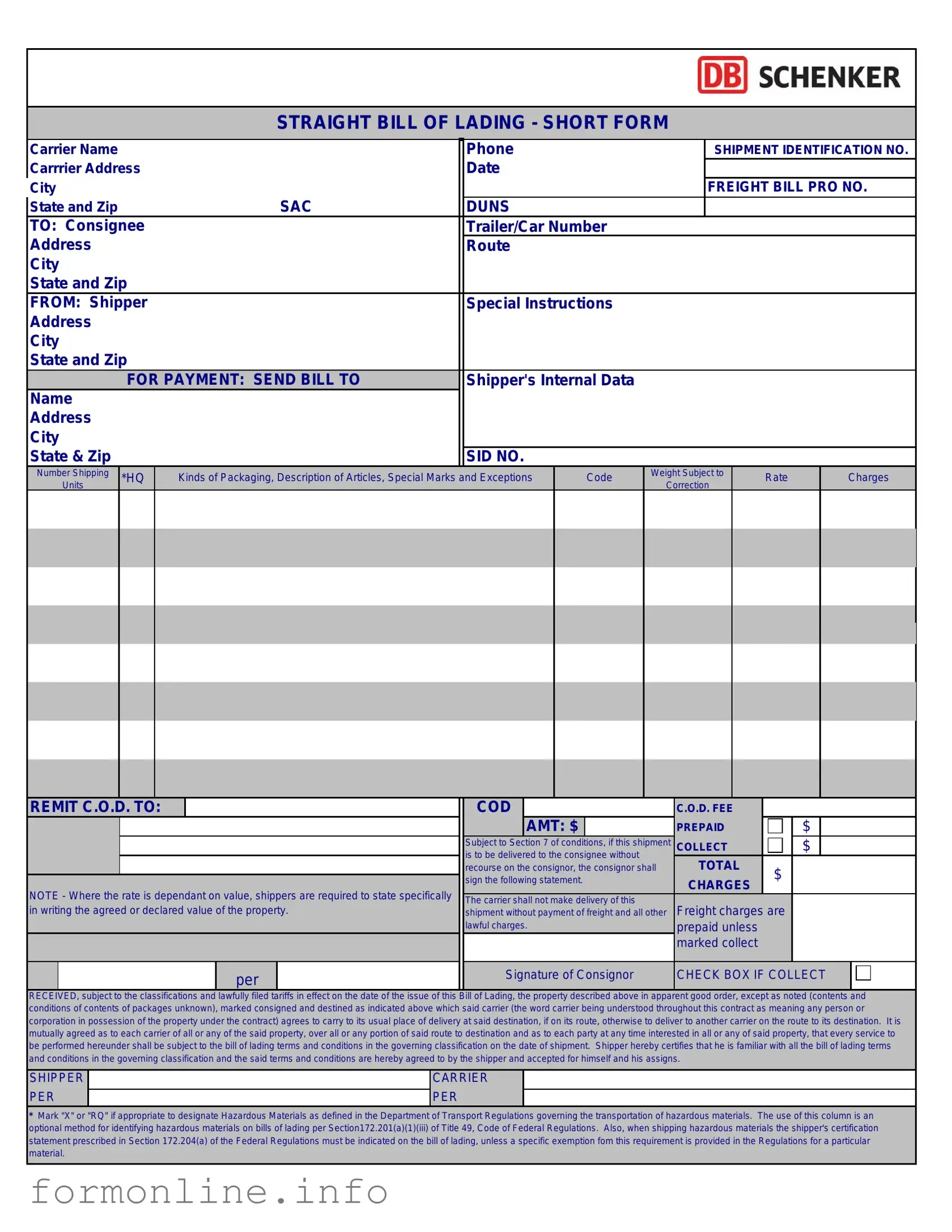The Straight Bill of Lading is often compared to the Uniform Commercial Code (UCC) documents. The UCC governs commercial transactions in the United States. Like the Straight Bill of Lading, it provides a framework for the transfer of goods and includes rules about the rights and duties of parties involved in a sale. Both documents aim to facilitate commerce by ensuring clarity and consistency in the transfer of ownership and responsibility for goods.
Another document similar to the Straight Bill of Lading is the Order Bill of Lading. While the Straight Bill of Lading serves as a receipt for goods and is non-negotiable, the Order Bill allows for the transfer of ownership through endorsement. This means that the Order Bill can be bought and sold, making it a more flexible option in commercial transactions. Both documents serve as proof of shipment but differ in their negotiability and transferability.
The Warehouse Receipt is also comparable to the Straight Bill of Lading. A Warehouse Receipt is issued by a storage facility when goods are stored. Like the Straight Bill, it acts as a receipt and provides details about the goods stored. However, the Warehouse Receipt is specific to goods held in storage, while the Straight Bill is typically used for goods in transit. Both documents help establish ownership and can be used to claim goods.
The Freight Bill is another document that shares similarities with the Straight Bill of Lading. A Freight Bill is an invoice issued by a carrier to the shipper for transportation services. While the Straight Bill serves as a contract of carriage, the Freight Bill outlines the costs associated with that transportation. Both documents are essential for the movement of goods and help clarify the responsibilities of the parties involved.
In the context of mobile homes, a proper transfer of ownership requires specific documentation, making the Bill of Sale for Manufactured Homes an essential element. This form not only legitimizes the transaction but also protects the interests of both the buyer and seller by clearly outlining the terms of the sale. Just as in other types of transactions, ensuring that all details are accurately recorded is crucial for a smooth transfer of ownership.
The Commercial Invoice also resembles the Straight Bill of Lading. A Commercial Invoice is a document that details the sale of goods between a buyer and a seller. It includes information such as the description of the goods, their value, and payment terms. Like the Straight Bill, it plays a crucial role in international trade by providing necessary information for customs clearance. However, the Commercial Invoice focuses more on the sale aspect, while the Straight Bill emphasizes the transportation of goods.
Lastly, the Air Waybill is similar to the Straight Bill of Lading in the context of air transport. The Air Waybill serves as a contract between the shipper and the airline, detailing the shipment of goods by air. Like the Straight Bill, it acts as a receipt for the goods being transported. However, the Air Waybill is specific to air freight, while the Straight Bill is used for other modes of transportation. Both documents are vital for ensuring the safe and efficient movement of goods.

